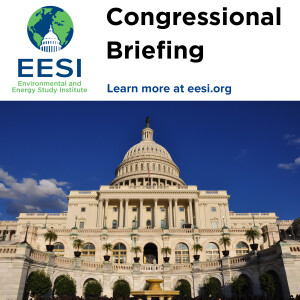
Monday May 15, 2017
Energy Emergency Preparedness: A Critical Federal-State-Private Sector Partnership
Lunch will be served Please RSVP to expedite check-in A live webcast will be streamed at 12:30 PM EDT at www.eesi.org/livecast (wireless connection permitting) The Environmental and Energy Study Institute (EESI) and the National Association of State Energy Officials (NASEO) invite you to a briefing about the key role played by the 56 governor-designated State and Territory Energy Officials, other state agencies, the private sector, and the U.S. Department of Energy (DOE) in mitigating the impacts of and responding to energy supply disruptions (of electricity, natural gas, and petroleum products). Such emergencies, often caused by extreme weather, can pose a threat to public health and safety and can cause lasting economic harm. According to the Congressional Research Service, weather-related outages cost the nation between $25 and $70 billion annually. State Energy Officials often lead the preparation of energy emergency (or energy assurance) plans, and work with the private sector and DOE in responding to energy emergencies. Equally important is mitigating the potential severity and length of energy emergencies through the promotion of more resilient energy infrastructure; electric generating fuel diversity; construction of high-performance mission critical public facilities; diversification of transportation fuels; and energy and water efficiency retrofits of public facilities. Such actions also help to minimize disruptions to mission-critical facilities, such as police and fire stations, schools, water systems, hospitals and communications infrastructure. To fulfill this critical public safety mission, State Energy Offices and their partners rely on the federal funding provided by DOE’s State Energy Program (SEP), and the expertise offered by its Office of Electricity Delivery and Energy Reliability. In partnership with DOE, states have led innovation on energy emergency preparedness and response, as well as energy infrastructure resilience, for over 25 years. Their efforts focus on limiting the impact of energy supply disruptions from all hazards—natural and man-made—and returning energy systems and communities to normal activity as rapidly as possible. In this briefing, NASEO and state energy directors will discuss the concept of energy assurance—as well as key mitigation actions—and how State Energy Offices partner with state and local agencies and the private sector to rebuild after a natural disaster, prepare for future emergencies, and improve resiliency with energy efficiency and renewable energy.
No comments yet. Be the first to say something!